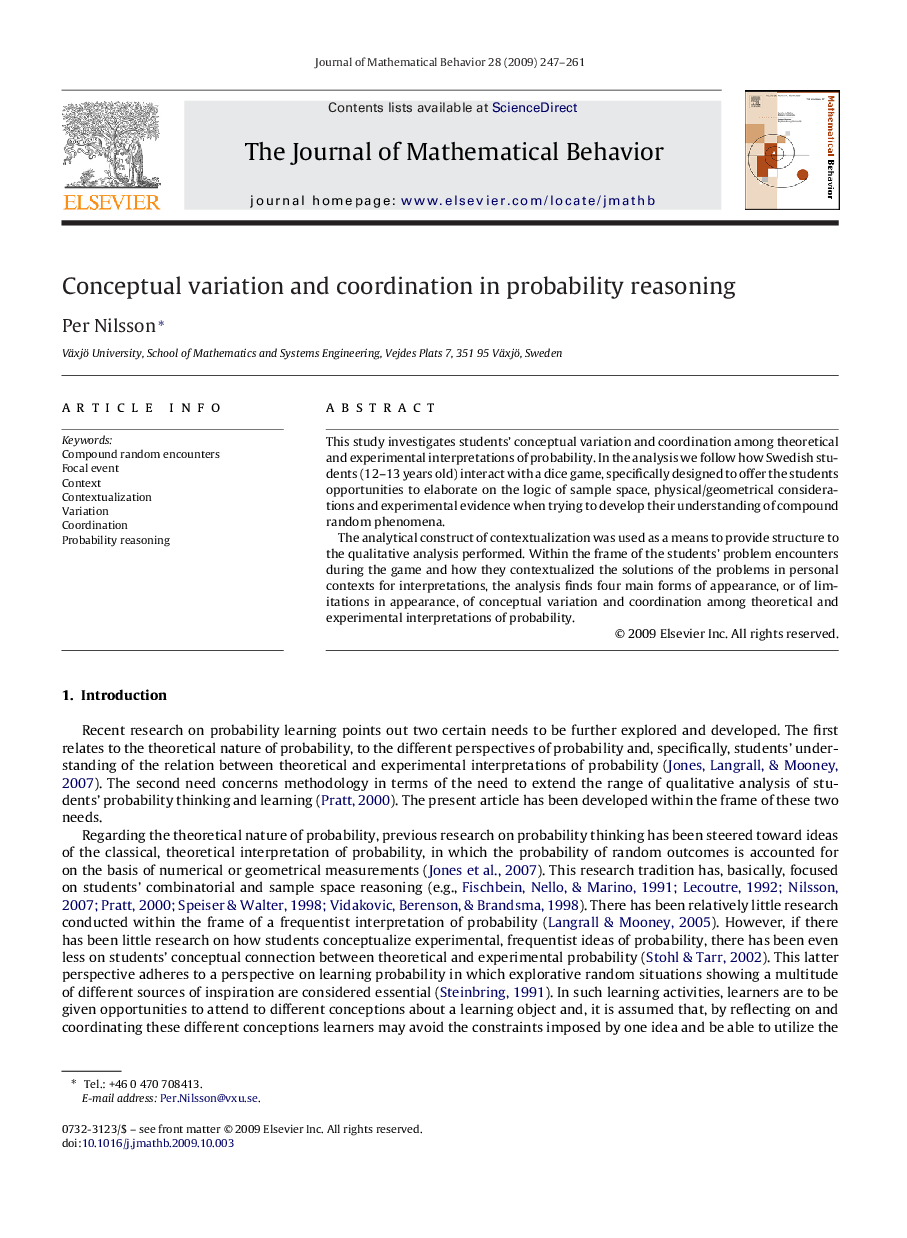| Article ID | Journal | Published Year | Pages | File Type |
|---|---|---|---|---|
| 360836 | The Journal of Mathematical Behavior | 2009 | 15 Pages |
This study investigates students’ conceptual variation and coordination among theoretical and experimental interpretations of probability. In the analysis we follow how Swedish students (12–13 years old) interact with a dice game, specifically designed to offer the students opportunities to elaborate on the logic of sample space, physical/geometrical considerations and experimental evidence when trying to develop their understanding of compound random phenomena.The analytical construct of contextualization was used as a means to provide structure to the qualitative analysis performed. Within the frame of the students’ problem encounters during the game and how they contextualized the solutions of the problems in personal contexts for interpretations, the analysis finds four main forms of appearance, or of limitations in appearance, of conceptual variation and coordination among theoretical and experimental interpretations of probability.
